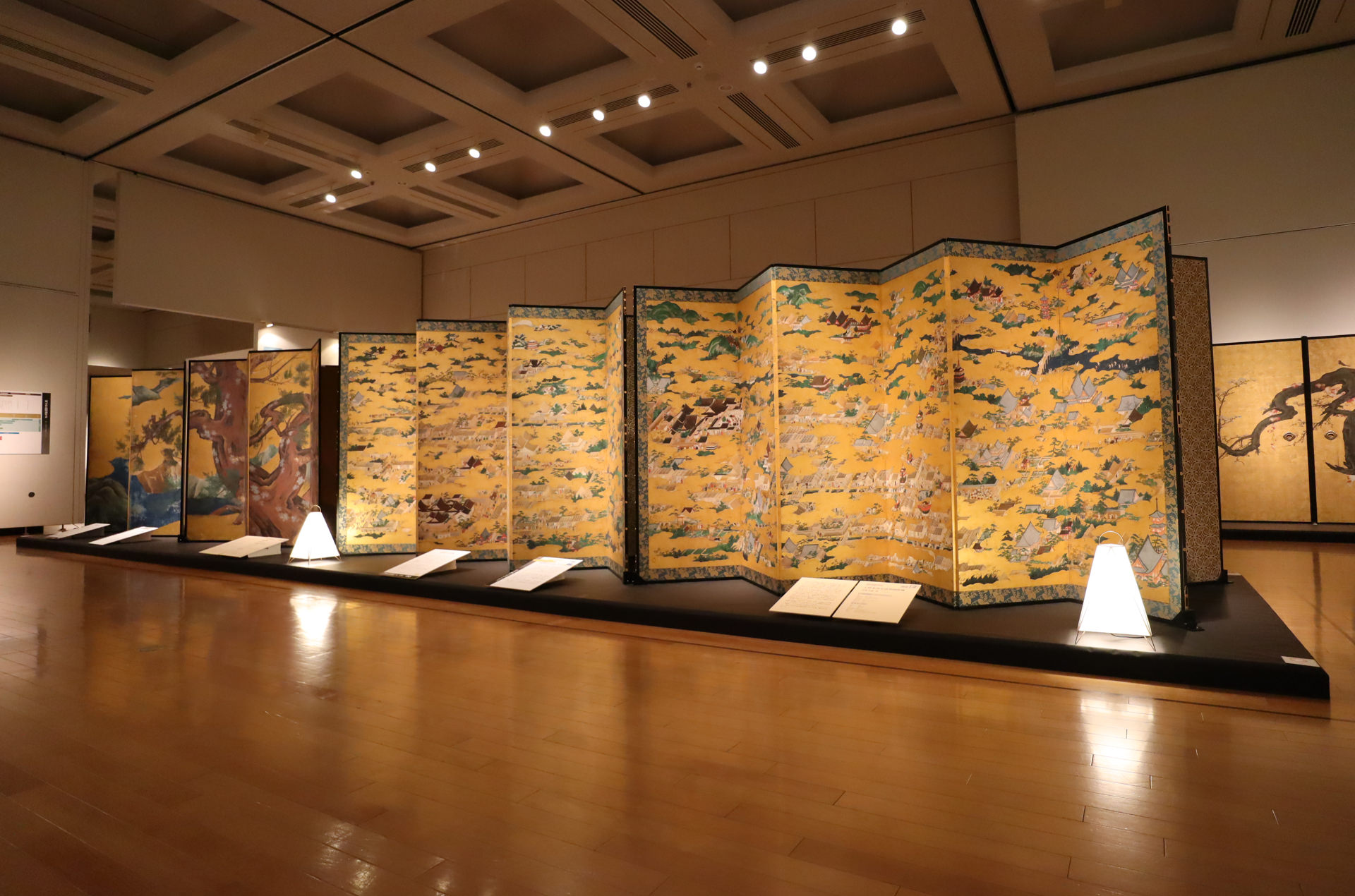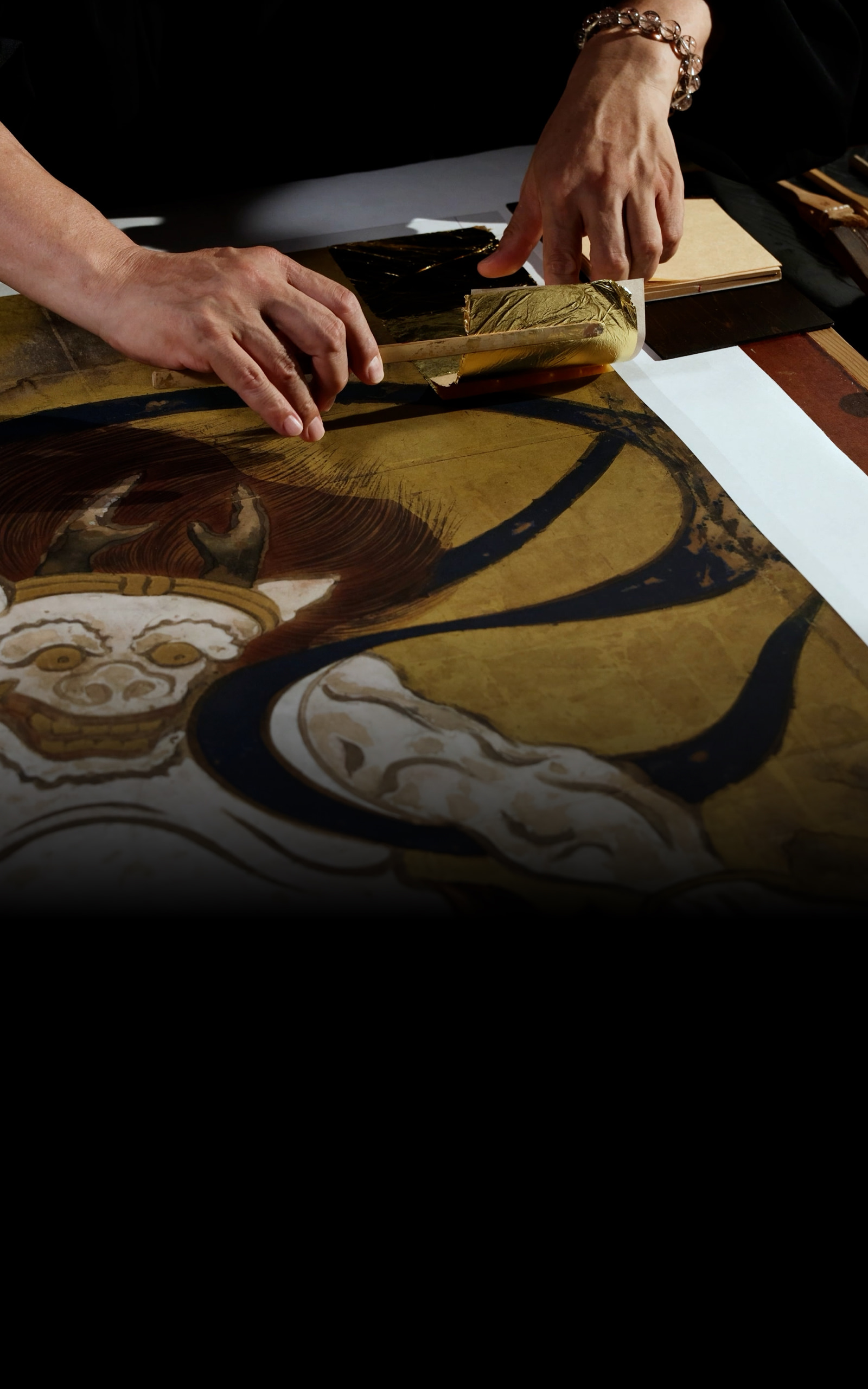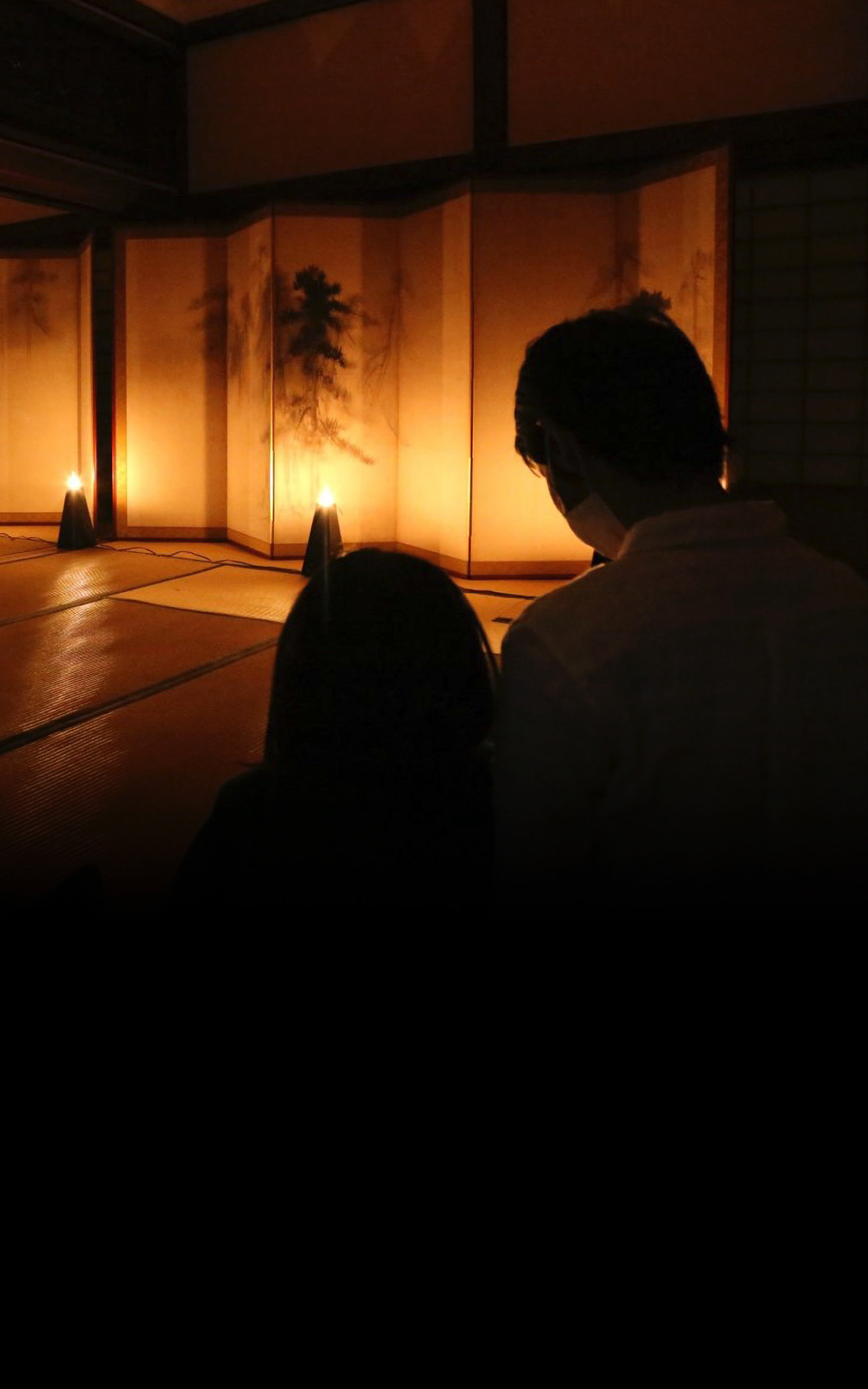About the Tsuzuri Project
Sharing the beauty of Japanese culture
with current and future generations
Our goal is to share Japanese cultural assets
with as many people as possible.
Many of Japan’s precious ancient cultural assets are not normally available for public viewing in Japan, such as the “Waves at Matsushima” folding screen by Tawaraya Sotatsu, which is now part of a collection overseas, and the “Pine Trees” folding screen by Hasegawa Tohaku, which is carefully preserved as a national treasure.
Our wish is to give as many people as possible the opportunity to enjoy the beauty of these cultural assets. We aim to protect and preserve the precious originals from deterioration, and pass their beauty on to future generations. We launched the Tsuzuri Project in March 2007 as part of the social contribution activities jointly promoted by Canon and Kyoto Culture Association (NPO).
We produce high-resolution facsimiles of Japanese cultural assets using Canon’s cutting-edge digital imaging technology and craftsmanship that draws on the traditions of Kyoto.
This not only enables us to protect the precious originals, but also provides us with facsimiles so faithful to the original that they can also be used for various purposes, including research on the works, public exhibitions at the institutions they are donated to, or teaching in schools.
Through the Tsuzuri Project, Canon seeks to preserve and pass on the beauty of Japanese culture, ensuring that it captures the hearts of people both now and in the future.


Utilization
Bringing cultural assets closer through many different ways
These high-resolution facsimiles have been produced so close to the original cultural assets that people almost cannot tell them apart. These high-resolution facsimiles are utilized in museums, temples, and shrines all over Japan in place of the original works. They can be appreciated in ways that would not be possible with the originals, allowing many people to feel closer to cultural assets.
Taking the time to appreciate the works without glass cases
Japanese cultural assets are painted with ink and mineral pigments on washi paper, meaning that they are extremely delicate. Due to this, they are displayed inside glass cases in most instances. On the other hand, displays of high-resolution facsimiles have no obstruction between the viewers and the works, allowing the viewers to closely appreciate the works up close.
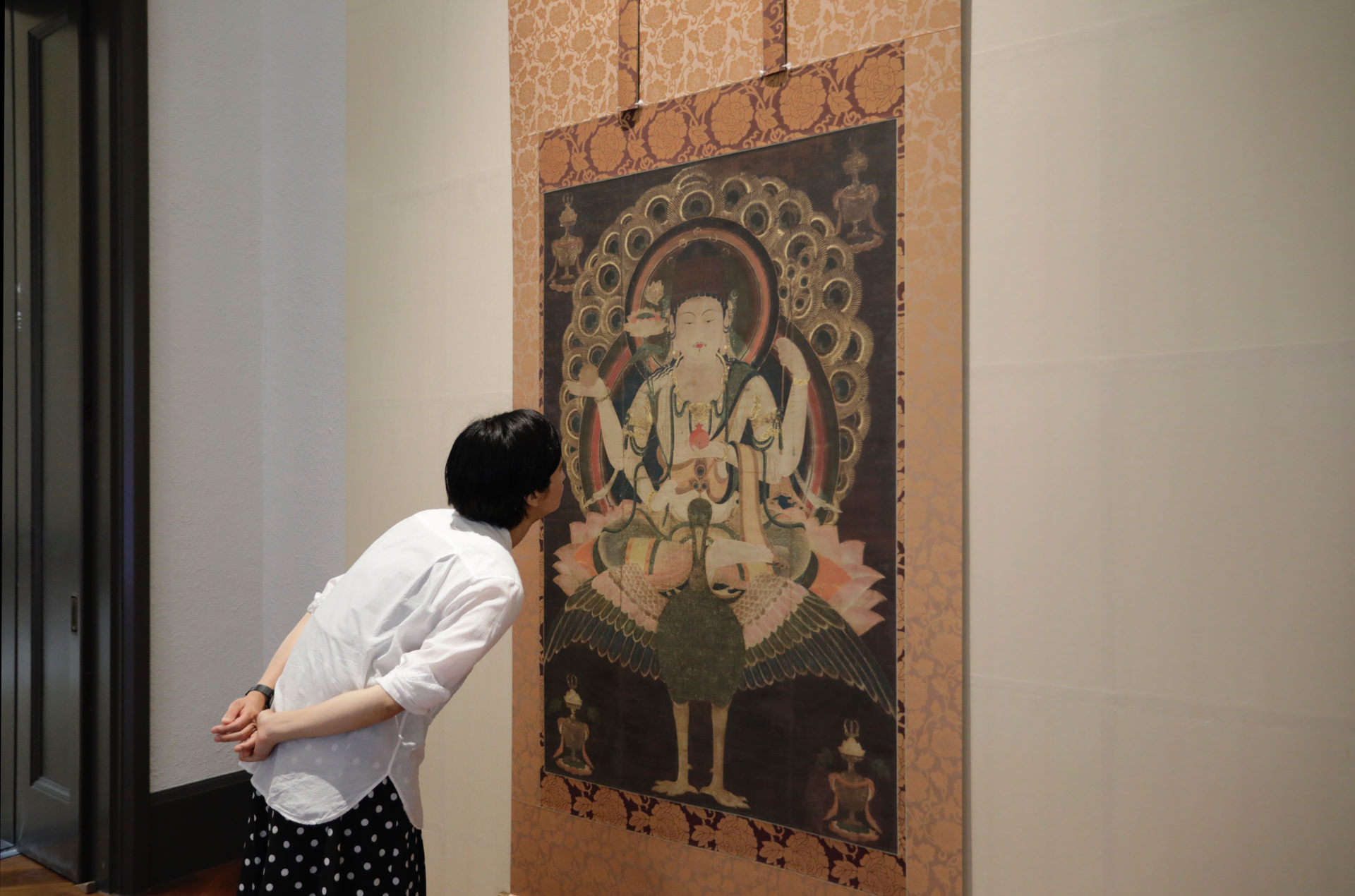
Displays where the works are said to have existed in the past
Japanese cultural assets that have left Japan over many years of history are not normally available for viewing in Japan. Some works are even prohibited from leaving the current properties. We help these cultural assets return home to temples and shrines, where they are said to have existed in the past, in the form of high-resolution facsimiles. After hundreds of years, we can experience the same views that were seen by people living back then.
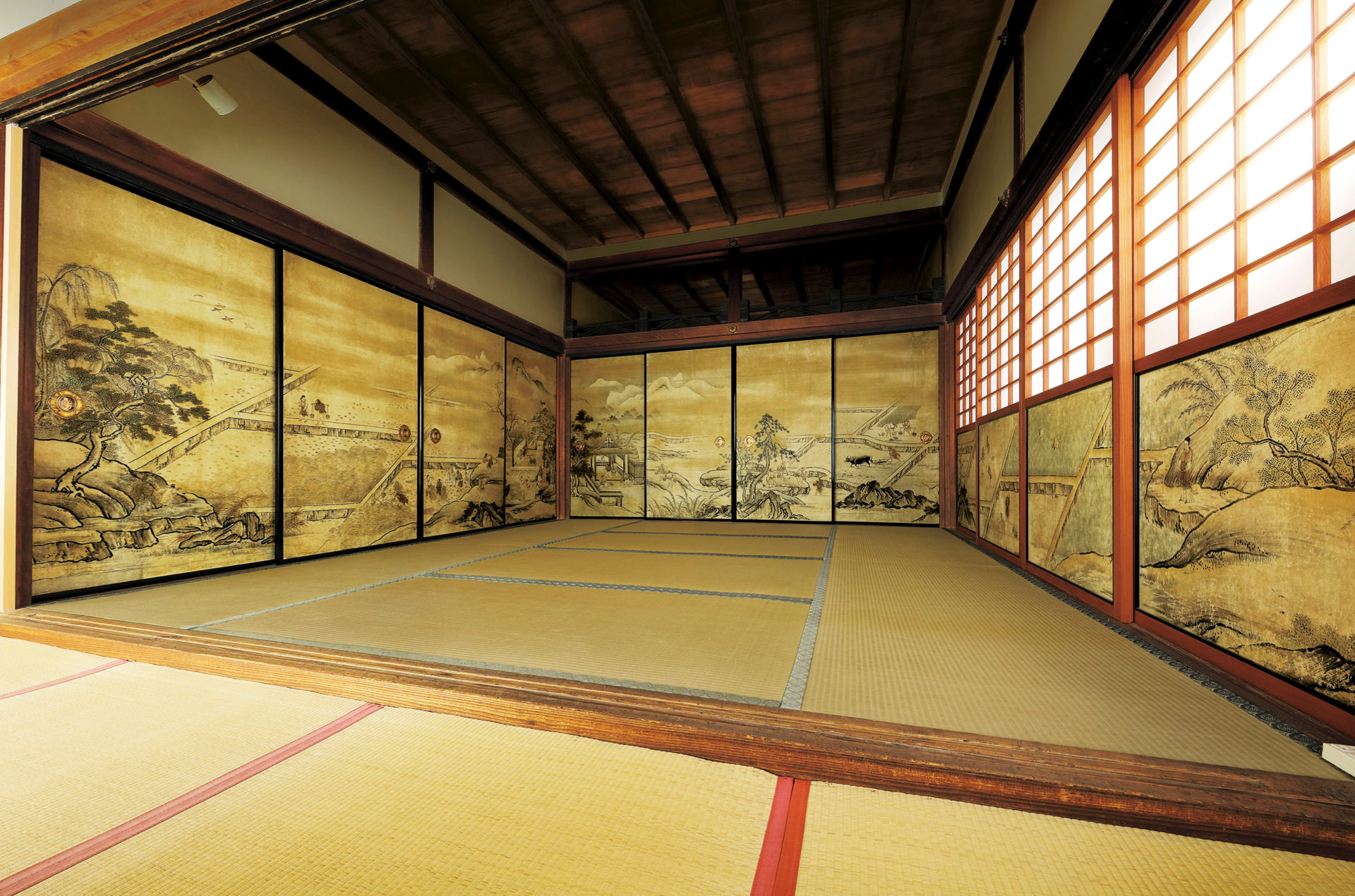
Interactive displays using digital contents
The trees and flowers painted in works sway and flutter. Snow falls on a pine forest, lit by the moon. These are images projected on high-resolution facsimiles to help viewers deepen their experience with the art. These interactive displays enable viewers to use their five senses through light, sound, fragrance, and breeze and lure them into the worlds within, enabling them to have deeper understandings of the works.

Interactive learning for the next generation of children
We love our four seasons in Japan and deeply treasure nature. Cultural assets continue to show us the root of such Japanese culture. In our special on-site classes using high-resolution facsimiles as living teaching aids, we strive to pass down Japanese culture to the next generation of children through the experiences of feeling close to the lives and culture of people back in time outside of textbooks.
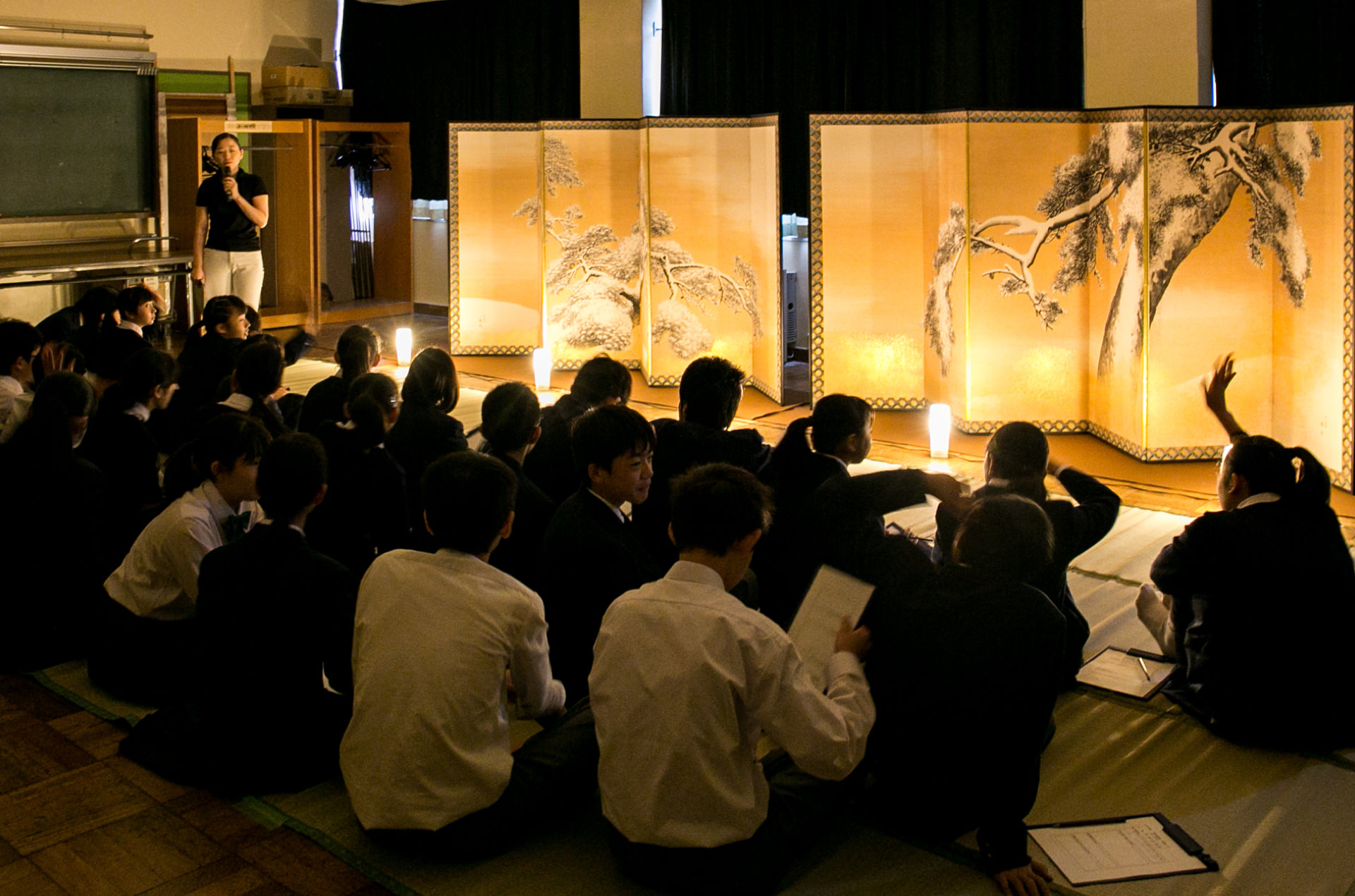
Tsuzuri Project exhibitions realize dream collections
There are national treasures, important cultural assets, and other artworks that have left Japan that are not often available for public viewing.
Tsuzuri Project exhibitions display all such works together, realizing dream collections that would otherwise be impossible with the original works.
